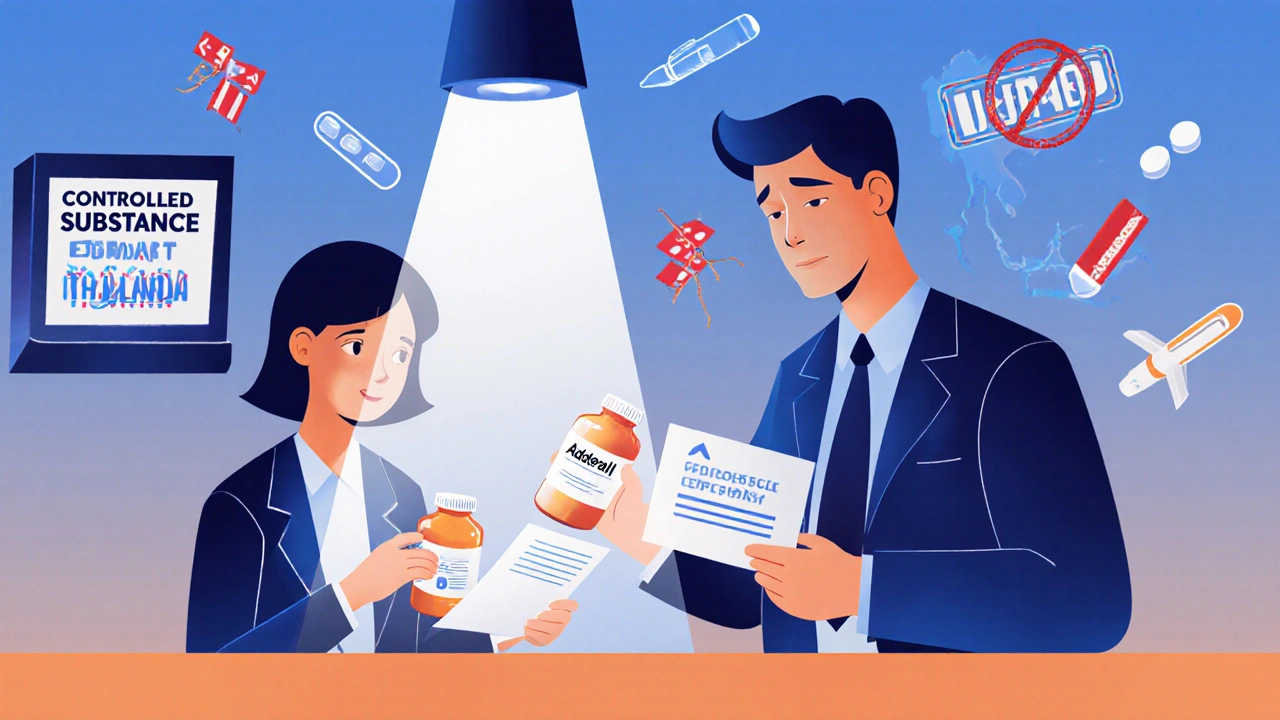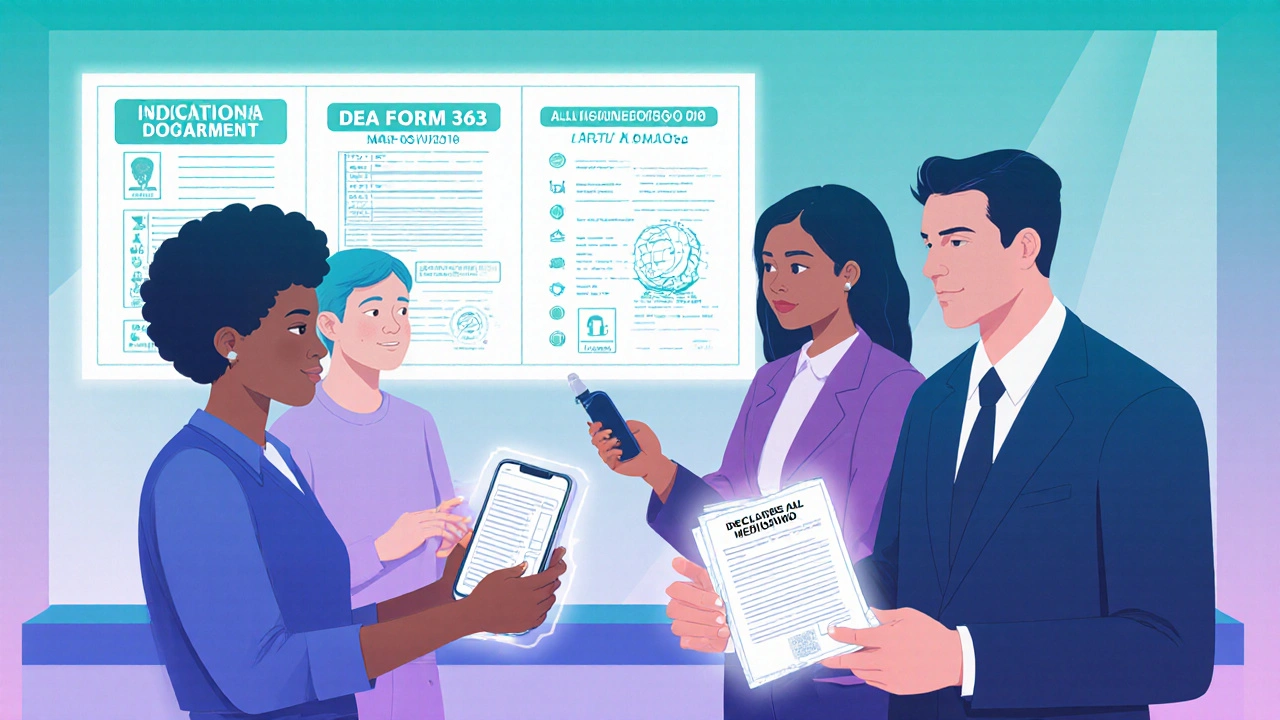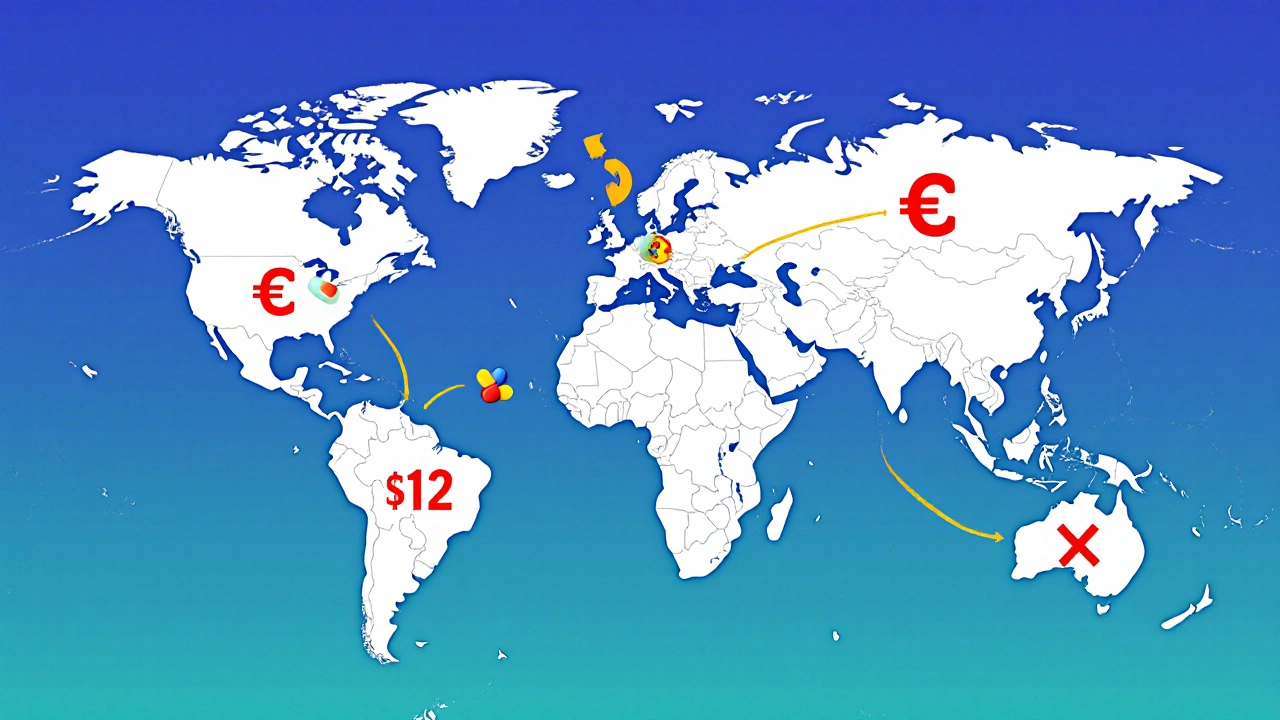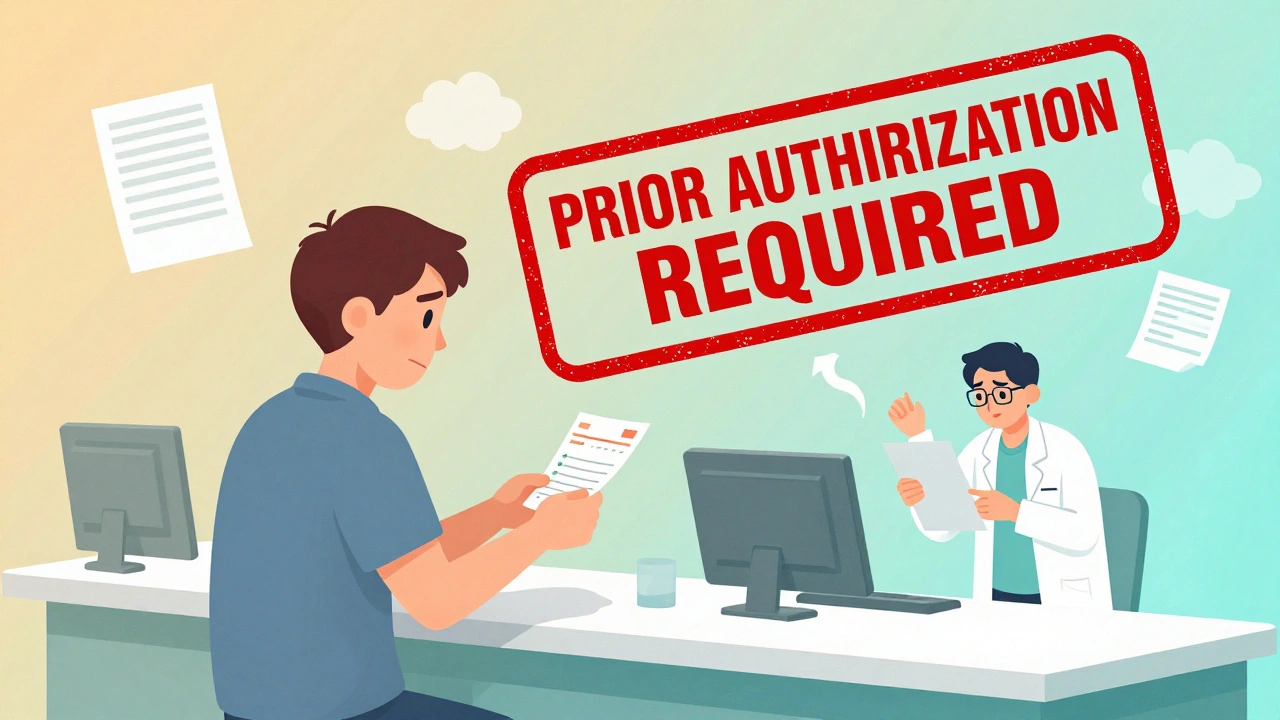
What You Can and Can’t Bring Across Borders with Your Medications
You’ve packed your clothes, your charger, your passport. But have you checked if your meds will get past customs? In 2025, bringing medications across international borders isn’t just about having a prescription-it’s about knowing the exact rules of each country you’re visiting. A pill that’s legal in New Zealand might be banned in Thailand. A bottle of painkillers you’ve used for years could be seized at U.S. customs if it’s not labeled properly. And if you’re flying with insulin, ADHD meds, or anxiety pills? You’re in a higher-risk category than you think.
The rules changed on August 29, 2025. The $800 de minimis threshold for duty-free personal shipments was suspended. That means even a small box of your daily pills can now be held at customs for days, taxed, or rejected. You’re no longer just a traveler-you’re a pharmaceutical import. And governments are watching closer than ever.
Why Medication Rules Are Tighter Than Ever
It’s not just about stopping drug dealers. In 2024, U.S. Customs seized over 3,200 shipments of fake or unapproved medications at ports of entry. The World Health Organization estimates that 1 in 10 medicines in developing countries are counterfeit. That’s why countries are tightening controls-not just on illegal drugs, but on legal prescriptions too.
Controlled substances like oxycodone, alprazolam (Xanax), and Adderall are now flagged in 87% of countries worldwide. Even if you have a valid prescription, many places treat these as narcotics. In Japan, Singapore, and the UAE, carrying benzodiazepines without prior approval can land you in jail. In some African and Southeast Asian countries, even trace amounts of stimulants in ADHD meds require special permits.
And it’s not just about drugs. Insulin, epinephrine auto-injectors, and even CBD oil can trigger border alerts. The TSA allows all FDA-approved medications on flights, but that doesn’t mean customs will let you into the country. Your airline might let you board, but the border officer might not let you through.
What the U.S. Allows (And What It Doesn’t)
If you’re entering the United States, you can bring in up to a 90-day supply of prescription medication for personal use. That’s it. No more. The FDA doesn’t allow bulk shipments or refills for extended stays. And if your meds are controlled by the DEA-like opioids, stimulants, or sedatives-you need prior authorization. In 2024, the DEA approved 78.3% of personal import requests, but the process takes 30+ days. Don’t wait until the day before your flight.
Here’s what you need:
- Original prescription bottles with your name, doctor’s name, and pharmacy details
- A letter from your doctor on letterhead listing the generic names, dosages, and medical reason for each medication
- For controlled substances: DEA Form 363 (obtained before travel)
The TSA lets you bring pills, liquids, creams, and medical devices like insulin pumps through security with no quantity limit. But if your liquid meds are over 3.4 ounces (100ml), they’ll be screened separately. Keep them in your carry-on. Never pack meds in checked luggage.
How Other Countries Compare
Canada lets you bring up to a 180-day supply under its Special Access Programme. The EU generally allows 90 days, but each country enforces it differently. Germany requires prescriptions to be in German. France may ask for a French translation. Australia requires all medications to be declared on arrival, even if they’re legal at home.
Some countries are stricter than others:
- Japan: No benzodiazepines allowed without pre-approval. Even OTC sleep aids with diphenhydramine are restricted.
- Thailand: Adderall and Ritalin are illegal. Possession can lead to prison time.
- United Arab Emirates: All prescription meds must be declared. Controlled substances require a permit from the Ministry of Health.
- Singapore: No stimulants, no opioids, no sedatives. Even codeine cough syrup is banned.
- China: All medications must be accompanied by a doctor’s letter and original prescription. Narcotics are strictly prohibited.
78 countries require prescriptions to be translated into English or the local language. That’s not a suggestion-it’s a rule. If your prescription is in Spanish and you’re flying to South Korea, you’re at risk.
The Documents You Actually Need
Forget carrying a pill organizer. Customs officers don’t care if you’ve got your meds neatly sorted. They care about proof. Here’s what works:
- Original bottles: 92% of travel medicine specialists say this is the most important thing. No labels? No entry.
- Doctor’s letter: Must be on official letterhead. Include: generic drug names, dosage, frequency, diagnosis, and your doctor’s contact info. Sign and date it.
- Translation: If you’re going to a non-English-speaking country, get your prescription and doctor’s letter translated. Many embassies offer this service for free or low cost.
- DEA Form 363 (for U.S. travelers with controlled substances): Apply at least 30 days in advance. Keep a printed copy with you.
- Insulin pump or CGM users: Contact TSA Cares at 1-855-787-2227 at least 72 hours before your flight. Bring your device’s manual and a doctor’s note.
Pro tip: Take a photo of your original prescription label and save it on your phone. If your bottle gets lost or damaged, you’ve got backup proof.
What Happens When Things Go Wrong
Over 1,800 travelers needed help from the CDC in 2024 just because of medication issues. Most of those cases involved controlled substances. Here’s what usually happens when you get caught without the right docs:
- Your meds are confiscated
- You’re questioned (sometimes for hours)
- You’re fined or placed on a watchlist
- In extreme cases, you’re arrested or deported
Reddit threads are full of horror stories. One traveler lost their Xanax in Thailand. Another was detained in Dubai for carrying melatonin (yes, melatonin). A man in Singapore was jailed for bringing a 30-day supply of Adderall-because he didn’t know it was illegal there.
But there’s good news too. Travelers who followed the ISTM’s medication letter template and carried original bottles reported 62% fewer issues. One traveler from California got through Japan without a hitch because she had her prescription translated by the embassy and kept her bottles sealed.

How to Prepare Before You Go
You don’t need to be a lawyer to travel with meds. But you do need to plan ahead.
- Start 6-8 weeks before your trip. Some countries take 30 days to approve your meds.
- Check the INCB’s country database. It’s updated monthly and lists exactly what’s banned or restricted in each country.
- Contact the embassy. Email them directly. Ask: “What documentation do I need to bring [medication name] into your country?”
- Don’t rely on pharmacy labels alone. Many international pharmacies don’t include your name or doctor’s info. Get a doctor’s letter even if you think you don’t need it.
- Carry your meds in your carry-on. Checked bags get lost. Your insulin can’t afford that.
And if you’re flying through the U.S.? Wear a sunflower lanyard. Over 148 major U.S. airports now use them. It’s a quiet signal to TSA agents that you have a medical condition. You don’t have to say a word.
The Bottom Line
Traveling with medication in 2025 is more complicated than ever. But it’s not impossible. The difference between a smooth trip and a nightmare is preparation. Don’t assume your home country’s rules apply everywhere. Don’t rely on your pharmacy’s label. Don’t wait until the airport to check if your meds are legal.
Carry your original bottles. Bring your doctor’s letter. Get translations. Know the rules. And if you’re unsure? Call the embassy. It takes 10 minutes. It could save you from a week in jail.
Can I bring my prescription pills in a pill organizer?
It’s risky. While TSA allows pill organizers, customs officers may not accept them as proof of legitimacy. Always keep your medications in their original bottles with pharmacy labels. If you must use a pill organizer, carry the original bottle alongside it, and have a doctor’s letter that lists the medications and dosages.
Is insulin allowed on international flights?
Yes. Insulin and related devices like pumps and CGMs are allowed on all international flights. The TSA permits them in carry-on bags without quantity limits. Always carry a doctor’s note and keep them in your carry-on. Never check them. Some countries require a letter explaining your condition-check your destination’s rules before you go.
What if my medication is banned in the country I’m visiting?
If your medication is banned, you cannot bring it in-even with a prescription. Talk to your doctor before you travel. They may be able to prescribe an alternative that’s legal in your destination. Some countries allow substitutions with prior approval. Never risk smuggling banned meds; the penalties can include fines, detention, or deportation.
Do I need to declare my medications at customs?
In most countries, yes. Even if your meds are legal, you’re required to declare them on arrival forms. Some countries have specific customs forms for medications. If you’re unsure, declare everything. It’s better to be transparent than to be accused of hiding something.
Can I mail my medication ahead of time?
It’s possible, but risky. Since August 29, 2025, all international medication shipments are subject to customs inspection and potential duties-no matter the value. Packages can be held for days or weeks. For personal use, it’s safer to carry your meds with you. If you must ship, use a courier with customs clearance experience and include all required documents.
Are over-the-counter (OTC) meds safe to bring?
Not always. Many OTC meds contain ingredients that are controlled substances abroad. For example, pseudoephedrine (in cold meds) is banned in Japan. Diphenhydramine (in sleep aids) is restricted in the UAE. Codeine (in cough syrups) is illegal in Singapore. Always check the active ingredients against your destination’s banned list before packing.
What to Do If You’re Denied Entry
If your meds are seized or you’re denied entry, stay calm. Ask for a written explanation. Contact your country’s embassy immediately. They can’t force a country to let you in, but they can help you get legal advice, contact your doctor, or arrange for medication to be sent to you if possible.
Don’t argue with customs officers. Don’t lie. Don’t try to hide pills. That’s how people end up in jail. The system is strict-but it’s predictable. Do your homework, follow the rules, and you’ll be fine.






Ross Ruprecht
November 22, 2025 AT 12:17Lisa Lee
November 22, 2025 AT 19:34Jennifer Shannon
November 23, 2025 AT 05:23Demi-Louise Brown
November 24, 2025 AT 20:34Bryson Carroll
November 25, 2025 AT 04:06